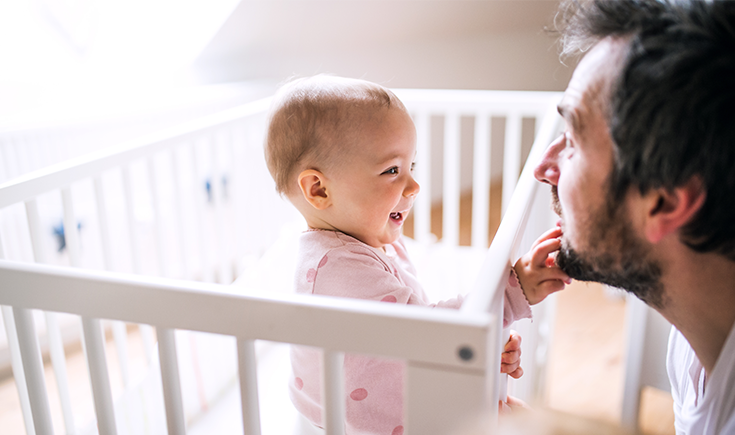

During the early years of a child’s life, nap timings and duration are in a continuous state of change. After a newborn period of all-day napping, babies eventually settle into a regular three-nap-a-day routine before moving onto two naps. Most children switch from these two daily naps to one nap sometime between the ages of 12 and 24 months. However, that year of difference is a very long span of time. This shows that age alone is not the only factor to consider when changing your baby’s nap routine.
Changing your baby from two daily naps to one nap isn’t about what your child thinks they want, nor is it about the routine you’d like to have. It’s about the biological need for two naps versus one. You don’t want to rush the process if your child is still benefiting from this important sleep time.
There is another consideration when deciding to make a change to their naps: The length of time that your child is awake from one sleep period to the next has an effect on their mood and behavior. No matter how well your baby sleeps at night naps are still very important. The older your child is, the longer they can go between sleep breaks without getting cranky. The biology behind this reason dictates that young babies usually need to divide their day up with two naps, but older babies can handle a full day with only one nap.
Since there is a wide range of what’s normal it’s important to observe your unique child’s behavior to see when they are ready to transition to one nap a day. Use the following lists as a guide only.
Signs that your child still needs two naps
- Your child is under 12 months old
- When you put your child down for a nap he or she plays, resists, or fusses for a while but always ends up sleeping for an hour or more
- When you take your child for car rides during the day they usually fall asleep
- If your child misses a nap they are fussy or act tired until the next nap or bedtime
- Your child is dealing with a change in their life (such as a new sibling, sickness, or starting daycare) that disrupts their nap routine
- Your child misses naps when you’re on the go, but when you are at home they take two good naps
Signs that your child is ready to transition to one nap
- When you put your child down for a nap, they play or fuss before falling asleep, and then takes only a short nap, or never fall asleep at all
- Your child can go for car rides early in the day and not fall asleep in the car
- When your child misses a nap they are cheerful and energetic until the next nap or bedtime
- Your child naps well for one of their naps, but totally resists the other nap
How to make the transition when signs point to change
Instead of thinking in terms of dropping a nap it’s better to think in terms of a routine change. The change from two naps to one nap is rarely a one-day occurrence. Most often there will be a transition period of several months when your child clearly needs two naps on some days, but one nap on others. You have a number of options during this complicated transition time:
- Watch for your child’s sleepy signs, and put your child down for a nap when indications first appear.
- Keep two naps, but don’t require that your child sleep at both times, allow quiet resting instead.
- Choose a single nap time that is later than the usual morning nap, but not as late as the afternoon nap. Keep your child active (and outside if possible) until about 30 minutes before the time you have chosen.
- On days when a nap occurs early in the day, move bedtime earlier by 30 minutes to an hour to minimise the length of time between nap and bedtime.
The danger of dropping a nap too soon
There are a great number of toddlers who switch from two naps a day to one nap, or (heaven forbid!) drop naps altogether, many months before they are biologically ready. This can lead to a devastating affect on their mood and behaviour. Their toddler meltdowns, or ‘big feelings’, could actually be the result of your child not meeting their sleep needs. The good news is that a modification of your child’s napping routine can make a wonderful and dramatic difference in their day – and yours.























